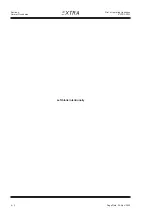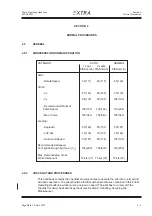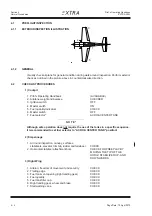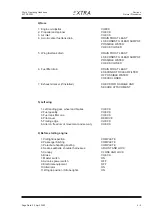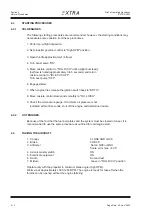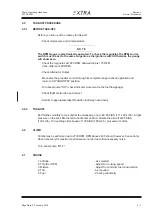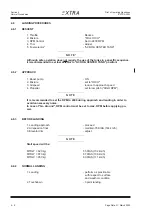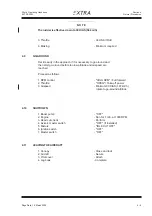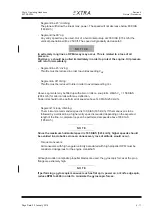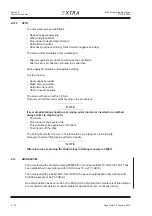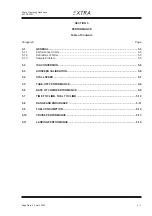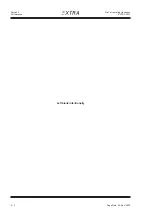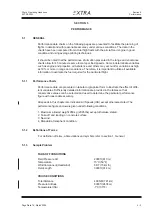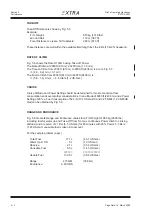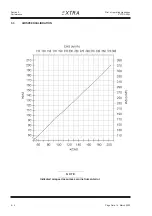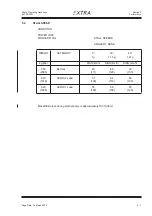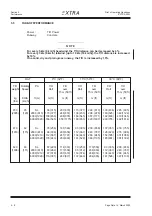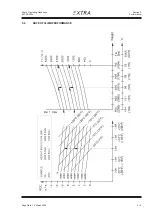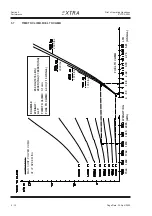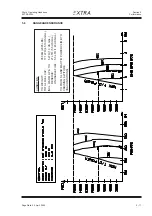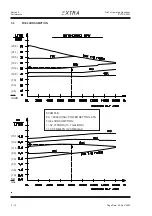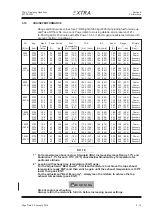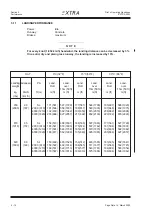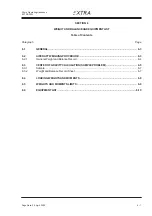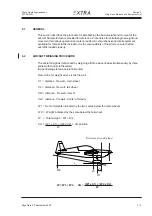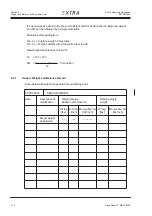
5 - 4
Page Date: 20. April 2002
Pilot´s Operating Handbook
EXTRA 300L
Section 5
Performance
TAKE-OFF
Take-Off Distance is shown by Fig. 5.5
Example:
-T/O Weight:
870 kg (1918 lbs)
-Ground Roll:
112 m (367 ft)
-Total Distance to clear a 50 ft obstacle:
248 m (813 ft)
These distances are well within the available field length incl. the 8 kts (15 km/h) headwind.
RATE OF CLIMB
Fig. 5.6 shows the Rate Of Climb using Take-off Power
The Rate of Climb at 2000 ft (610 m): 2320 ft/min (11.8 m/s)
The Time to Climb from 2000 ft (610 m) to 8000 ft (2438 m) is acc. to Fig. 5.7:
=> (4,0 - 0,9) min = 3,1 min
The Fuel to Climb from 2000 ft (610 m) to 8000 ft (2438 m) is:
=> (5,8 - 1,4) Liters = 4,4 Liters (1.2 US Gal.)
CRUISE
Cruise Altitude and Power Setting should be determined for most economical fuel
consumption and several other considerations. In an altitude of 8000 ft (2438 m) and a Power
Setting of 65 % a Fuel Consumption of 52 L/H (13.7 US Gal/H) and 3,25 NM/L (12.3 NM/US
Gal) can be obtained by Fig. 5.9.
RANGE AND ENDURANCE
Fig. 5.8 presents Range and Endurance values for a T/O Weight of 950 kg (2095 lbs)
including fuel for warm up and Take-Off from SL, max continuous Power climb to cruising
altitude, and a reserve of 21 liter (5.5 US Gal.) for 45 minutes with 45% Power. 5,5 liters
(1,45 US Gal.) unusable fuel is taken into account.
For the sample problem (appr.)
Total Fuel
171 L
(45.1 US Gal.)
Warm Up & T/O
- 5 L
(1.3 US Gal.)
Reserve
- 21 L
(5.54 US Gal.)
Unusable Fuel
- 5.5 L
(1.45 US Gal.)
======
============
Usable Fuel
139.5 L
(36.8 US Gal.)
Range
415 NM
(768 km)
Endurance
2.49 HRS
Page Date: 16. March 2009
Summary of Contents for 300L
Page 2: ...Left blank intentionally ...

